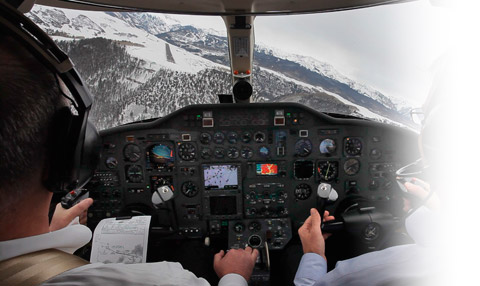Mentoring Matters
The dreaded visual

Ask a first-time jet pilot halfway through his simulator training what he finds to be the most difficult approach to fly, and you may get one of several answers. A single-engine hand-flown ILS, a circle to land, or maybe a full NDB approach—depending on the aircraft in question and the pilot’s strengths and weaknesses, any of a number of approaches is likely to prove most vexing.
April 2011 AOPA Pilot Turbine Edition
- Making the Turbine Transition - What’s so different about these pages
- II For the Road - Citation IIs in the used marketplace
- V 2 Variables - Clearing obstacles after takeoff means flying by the numbers
- Mentoring Matters - The dreaded visual
- Logbook Entry: As I see it
Ask that same pilot the same question when he’s just begun mentoring, and it’s nearly certain the answer will be something like, “I just can’t nail that visual approach yet.” I can hear the laughing from piston pilots. What could be easier than a visual? Yet every pilot I’ve mentored has struggled with mastering visuals long after they could fly a single-engine ILS while reciting poetry.
Why? It’s largely an unfortunate byproduct of one of the factors that makes flying jets so safe—how tightly scripted most operations are. On a nice ILS with a six- to eight-mile final, a properly trained pilot knows exactly when to be at X speed and have Y configuration of flap and gear extension. There’s a recipe cooked up by the aircraft manufacturer for optimal flight—follow the recipe and the result will be pleasing every time.
In contrast, a visual approach can feel like trying to whip up a gourmet dinner with the dregs of a mostly empty pantry—not a lot of guidance, and often nothing good to work with. Being cleared for the visual from 5,000 feet agl to a runway with no instrument approach (while eight miles out on base leg) requires creativity and improvisation that isn’t practiced much, if at all, in simulator training.
There are some tips, however, a pilot can heed to make the visual work. First is recognizing that most new pilots in this situation will find themselves on short final with an excess—not a shortage—of energy. It is much harder to take energy, either in the form of airspeed or altitude, out of a jet aircraft than a prop. For this reason, the first reaction to being cleared for a visual approach should be to bring the thrust levers to idle. Slowing the aircraft so that landing gear and at least partial flaps can be extended results in a much more draggy and easy-to-manage aircraft. Thrust can always be added back if it turns out the energy state isn’t excessive.
No guidance, and nothing much to work with
Along with carrying too much energy, another common mistake is too quickly disengaging the autopilot. Because the approach doesn’t fall into one of the typical scenarios practiced in sim training, the pilot has a reflexive reaction to return to basics and hand-fly. For an inexperienced pilot this greatly increases the workload and usually decreases the quality of the approach. Using the autopilot in the basic heading and vertical speed modes will let the pilot focus on keeping the big picture looking good.
Finally, a visual approach doesn’t mean electronic guidance shouldn’t be used. If the runway has an IFR approach, it should be used for reference. If not, creative use of the GPS or FMS can give at least lateral guidance to any runway, anywhere. Used properly, synthetic vision can provide accurate vertical guidance to a runway with no VASI or approach. While these tricks aren’t always taught in initial sim training, by expending the effort to learn them, a pilot will find visuals much less taxing.
Neil Singer is a Master CFI and a mentor pilot in Cessna and Embraer light jets.


